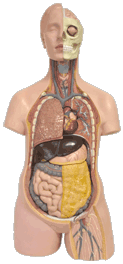At WiseGEEK, we're committed to delivering accurate, trustworthy information. Our expert-authored content is rigorously fact-checked and sourced from credible authorities. Discover how we uphold the highest standards in providing you with reliable knowledge.
What Is tRNA Synthetase?
For the correct translation of proteins to occur at the ribosome of a cell, a transfer ribonucleic acid (tRNA) codon must be matched up with the correct amino acid sequence. tRNA synthetase is the enzyme that makes sure that this match is made correctly. There are two classes of tRNA synthetase — Class I and Class II — and the difference between the classes is determined by the number of subunits the protein contains. Both classes function the same way: by binding adenosine triphosphate (ATP) to the correct amino acid sequence. The tRNA is then "charged" and ready to be translated.
tRNA synthetase enzymes also are able to perform what is called proofreading. By double checking the bond between the tRNA and the amino acids, tRNA synthetase is able to verify whether the match was made correctly. If a mistake was made, the bond between the tRNA and the amino acid will be dissolved, and the molecules will be recycled.

After it has been verified that the tRNA codon has been bound to the proper amino acid sequence, the tRNA is sent to the ribosome for translation. There are only 20 amino acid bases, and it is the sequence of these bases that determines which protein will be made. There are about 50,000-100,000 different proteins made by the human body, and tRNA synthetase plays a vital role in the correct production of these proteins.
If the amino acids are not attached to tRNA properly and not corrected by the proofreading proteins, an incorrect protein can be produced. These proteins usually are nonfunctional, and the molecules are recycled by the cell to make new proteins. In some instances, the production of an incorrect protein can result in a genetic mutation. These mutations are often recognized by the body, and the proteins are broken down. In some very rare instances, these mutations can result in a genetic disorder.
Proteins play a very large and diverse role in the functioning of the human body. They act as hormones to regulate the body. They help transport oxygen in the blood in the form of hemoglobin.
The antibodies that the immune system uses to fight infection are proteins. Muscles need proteins to contract. Collagen and keratin are proteins that give structure to the skin and hair. Proteins can even be broken down to give the body energy to function properly if nutrition is not adequate.
AS FEATURED ON:
AS FEATURED ON:










Discuss this Article
Post your comments